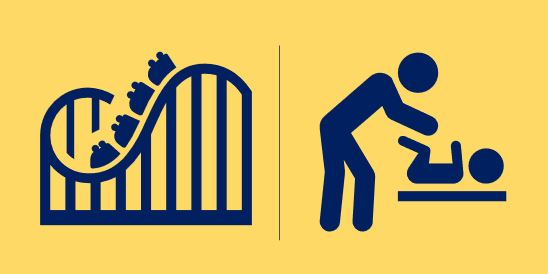7 Powerful Reasons to Embrace Agile Ways of Working for Enhanced Business Outcomes

In today’s fast-paced business world, success demands the ability to adapt quickly to changing market demands and customer needs. Agile ways of working (agile WoW) provides the perfect platform to meet these demands by offering a flexible and iterative approach to project management and software development.
Agile WoW enables teams to deliver value faster, respond to changing requirements, and achieve better business outcomes. This approach has proven to be an effective tool for organizations of all sizes and industries. Agile practices and methodologies used in software development teams are a key part of Agile WoW’s success. In this article, we will explore the common practices and methodologies used in software development teams, their role in improving project management, and the impact of Agile on cross-functional teams.
Whether you’re new to Agile WoW or looking to optimize your team’s Agile processes, this article is here to provide you with valuable insights and practical tips for implementing Agile WoW in your organization. So, let’s dive in and start reaping the benefits of Agile!
Agile Methodologies and Practices

Agile methodologies and practices have become increasingly popular in the software development industry. They are designed to help teams work collaboratively, efficiently, and flexibly to deliver high-quality products. Let’s explore the various aspects of agile methodologies and practices and their importance in software development.
Overview of Common Agile Practices
Agile practices are designed to enable software development teams to work collaboratively and efficiently. These practices include:
- Daily stand-up meetings
- Sprint planning and review meetings
- User stories and backlog management
- Continuous integration and testing
- Retrospectives
The Role of Agile Methodologies in Software Development
Agile methodologies are frameworks that guide software development teams in their efforts to deliver high-quality products. Agile methodologies emphasize collaboration, flexibility, and responsiveness to change. This section will explore the most common agile methodologies used in software development, including Scrum, Kanban, and Extreme Programming (XP).
How Agile Methodologies Improve Project Management
Agile methodologies offer several benefits that help to improve project management. In this section, we will explore how agile methodologies can help project managers to deliver projects on time, within budget, and with high-quality outcomes. We will look at the following benefits of agile methodologies:
- Improved collaboration and communication
- Increased flexibility and responsiveness
- Continuous improvement and feedback
- Faster time-to-market
- Enhanced customer satisfaction
Benefits of Adopting Agile Methodologies

Adopting agile methodologies can offer numerous benefits to organizations, including improved team performance, higher customer satisfaction, and increased business outcomes. In this section, we will discuss some of the key benefits of adopting agile methodologies.
The impact of agile on software development teams
Agile methodologies have a significant impact on software development teams. By adopting agile, software development teams can work in smaller, more flexible team structures that prioritize customer needs and satisfaction. Agile teams also emphasize teamwork, collaboration, and continuous improvement, which can lead to increased morale, greater accountability, and better communication among team members.
Additionally, agile methods promote a culture of continuous learning, encouraging team members to continually improve their skills and knowledge.
How cross-functional teams enhance agile working
Cross-functional teams are an integral part of agile ways of working. By bringing together individuals with different skills and expertise, cross-functional teams can tackle complex problems more effectively. This approach enables teams to create more value and work more efficiently than functional silos.
In addition, cross-functional teams promote a shared sense of responsibility, collaboration, and collective ownership of the work, leading to better outcomes and improved team performance.
Business outcomes that can be achieved through agile ways of working
Agile ways of working can deliver a wide range of business outcomes, from increased productivity and faster time-to-market to improved customer satisfaction and enhanced employee engagement. Agile methods help organizations respond more quickly and effectively to changes in customer needs and market demands, enabling them to deliver products and services that meet customer expectations. Agile ways of working also foster a culture of continuous learning, enabling organizations to stay ahead of the competition and adapt to new challenges and opportunities.
In summary, the benefits of adopting agile methodologies are numerous and far-reaching. By emphasizing teamwork, collaboration, continuous improvement, and customer satisfaction, agile ways of working can help organizations improve team performance, increase business outcomes, and stay ahead of the competition.
Implementing Agile in Teams and Organizations

Adopting Agile methodologies involves significant changes in team and organizational practices. Here are some strategies and considerations for implementing Agile in teams and organizations:
Strategies for Adopting Agile Methodologies
- Start Small: Begin with a pilot project or team and gradually expand Agile practices to other teams and projects. This approach allows teams to learn from their experiences and make necessary adjustments.
- Training and Coaching: Provide Agile training and coaching to team members to build their skills and knowledge. This training can be customized based on the specific needs of the team or organization.
- Agile Tools and Techniques: Use Agile tools and techniques to support Agile practices. These tools can help teams manage their work, improve collaboration, and track progress.
Building Flexible Team Structures to Support Agile
Cross-functional teams are essential for Agile ways of working. These teams bring together individuals with different skills and perspectives to work on a common goal. Here are some ways to build flexible team structures to support Agile:
- Small Teams: Agile teams are typically small, with no more than nine members. This small size facilitates communication, collaboration, and decision-making.
- Stable Teams: Agile teams work together for an extended period, ideally throughout the project lifecycle. This stability promotes a sense of ownership and accountability among team members.
- All the Skills Needed: Agile teams should have all the skills needed to deliver the product or service. This approach allows teams to be self-organizing and makes them more responsive to changing requirements.
Addressing Challenges in Implementing Agile Methodologies
Implementing Agile methodologies can be challenging. Here are some common challenges and ways to address them:
- Resistance to Change: Resistance to change is a common challenge in implementing Agile. To overcome this, involve team members in the decision-making process and provide them with the necessary training and coaching.
- Functional Silos: Functional silos can hinder cross-functional collaboration, which is essential for Agile ways of working. To address this, create opportunities for collaboration and communication among teams.
- Resource Allocation: Resource allocation can be challenging in Agile, especially when working on multiple projects. To address this, prioritize work based on customer value and continuously review and adjust priorities as needed.
Implementing Agile methodologies is a journey, and teams and organizations will need to continuously learn and adapt to achieve the desired business outcomes.
Building Agile Skills and Culture

Agile methodologies focus on creating high-performing teams that can effectively deliver results while adapting to changes in requirements and customer needs. Building an agile culture and skillset is critical to the success of the agile way of working.
The importance of continuous learning in agile teams
One of the cornerstones of agile methodologies is the idea of continuous learning and improvement. Agile teams are expected to regularly review their work processes, reflect on successes and failures, and implement changes to improve their performance.
Continuous learning can be achieved through training programs, coaching, mentoring, and knowledge-sharing activities. This can help teams stay up-to-date with the latest tools, techniques, and technologies and increase their capacity to adapt to changing needs.
Fostering an agile mindset in the workplace
An agile mindset is characterized by a willingness to embrace change, a focus on customer value, and a commitment to continuous improvement. Fostering an agile mindset requires more than just training and education – it requires a shift in organizational culture.
Leaders must create a work environment that supports experimentation, collaboration, and risk-taking, and encourages individuals to take ownership of their work and their personal growth.
Behavioral management in agile teams
Agile methodologies emphasize the importance of self-organizing teams, but this doesn’t mean that team members can simply work in isolation. Teams still require behavioral management to ensure that everyone is working towards a common goal, adhering to team norms, and communicating effectively.
This can be achieved through regular check-ins, team-building activities, and feedback sessions. Behavioral management can also help create a culture of trust and psychological safety, which is critical for high-performing agile teams.
Agile WoW in Practice
Agile ways of working are not only limited to software development teams but are becoming more and more relevant in various industries. In this section, we will look at some examples of how agile WoW can be implemented in practice, including case studies of successful agile transformations and how agile methodologies can be applied in non-IT groups.
Case studies of successful agile transformations
Agile has become increasingly popular in recent years, and many organizations have implemented agile WoW with great success. One example is Spotify, a music streaming service that has been known for its innovative organizational structure based on the agile method.
The company has adopted a framework called “Squad” that consists of cross-functional teams, each with its own mission and goals, and works on delivering value to the customers. This has led to increased efficiency and flexibility within the organization, resulting in a more dynamic and customer-centric approach.
Another successful agile transformation can be seen in the Dutch bank ING. ING has embraced agile methodologies to improve its IT department’s efficiency and delivery speed, resulting in better customer service and a more agile way of working throughout the organization.
The company has implemented scrum, a popular agile framework that helps teams work more efficiently and effectively. This has resulted in shorter development cycles, faster time to market, and improved customer satisfaction.
Applying agile methodologies in non-IT groups
Agile methodologies are not just for IT groups; they can be applied to any team or project that requires flexibility and adaptability. One example is in marketing, where agile marketing has become increasingly popular.
The agile marketing approach involves working in small, cross-functional teams that focus on delivering value to the customers in short, iterative cycles. This approach has been shown to increase marketing effectiveness, customer engagement, and ROI.
Agile methodologies can also be applied in HR to streamline and improve recruitment, onboarding, and performance management processes. Agile HR involves working in small, cross-functional teams that focus on delivering value to the employees in short, iterative cycles. This approach has been shown to improve employee engagement, retention, and productivity.
Integrating agile values into the work culture
Agile WoW is not just a set of methodologies and practices; it is a mindset and a culture. To fully realize the benefits of agile WoW, it is essential to integrate agile values into the work culture. This includes valuing individuals and interactions over processes and tools, responding to change over following a plan, and delivering working solutions over comprehensive documentation.
By embracing these values, organizations can create a more dynamic, collaborative, and innovative work culture that fosters continuous learning, improvement, and customer satisfaction.
Wrap Up
In conclusion, Agile WoW is a powerful approach to project management and software development that emphasizes flexibility, collaboration, and continuous improvement. By adopting agile methodologies and practices, organizations can achieve better business outcomes, more effective project management, and higher levels of customer satisfaction.
However, implementing agile in teams and organizations requires careful planning and execution, as well as a commitment to continuous learning and cultural change. It’s important to address challenges along the way and to build a strong foundation of agile skills and values.
Ultimately, the benefits of adopting agile methodologies and practices are clear: greater team performance, more effective resource allocation, and a more responsive approach to customer needs. With the right mindset and strategies in place, any team or organization can begin the agile journey and start reaping the rewards of this powerful way of working.
Frequently Asked Questions
What is agile methodology, and how can it benefit my organization?
Agile methodology is a project management approach that emphasizes flexibility, adaptability, and customer value. Adopting agile methodologies can help teams work more collaboratively, respond more quickly to changing requirements, and deliver better results.
How can I adopt agile methodologies in my team?
To adopt agile methodologies in your team, start by identifying the key principles and practices of agile, such as daily stand-up meetings, sprint planning, and user stories. You may also want to consider working with a scrum master or coach to guide the process.
What is an agile team, and why it different from a traditional team?
Agile teams are typically cross-functional, self-organizing, and focused on delivering value to the customer. Unlike traditional teams, which may be organized by function or department, agile teams are organized around delivering specific outcomes.
What is disciplined agile, and how is it different from other agile methodologies?
Disciplined agile is an agile methodology that emphasizes process and tooling, as well as collaboration and continuous improvement. Unlike other agile methodologies, which may focus more on flexibility and adaptability, disciplined agile provides a more structured approach to agile development that can be useful for large, complex projects.
How can a scrum master help my team adopt agile methodologies?
A scrum master is a trained facilitator who helps teams adopt and improve their use of agile methodologies. They can provide guidance on agile practices, facilitate meetings and retrospectives, and help resolve conflicts or obstacles that may arise during the project.
What is a small cross-functional team, and how can it benefit my organization?
A small cross-functional team is a group of individuals from different departments or functions who work together to deliver a product or service. This type of team can be highly effective in agile environments, as it allows for faster decision-making and more effective communication and collaboration.
How can leadership teams support the adoption of agile methodologies?
Leadership teams can support the adoption of agile methodologies by providing resources, setting clear goals and expectations, and modeling agile behaviors themselves. They can also help remove obstacles and provide guidance as needed to help teams succeed.
How can development teams create more effective user stories?
Development teams can create more effective user stories by focusing on the needs and goals of the user, rather than just the technical requirements of the product. They can also work closely with the product owner and other stakeholders to refine and prioritize user stories as needed.
What is the role of work-life balance in agile methodologies?
Work-life balance is an important consideration in agile methodologies, as it can help prevent burnout and improve team morale. By allowing team members to have more control over their work schedules and priorities, agile methodologies can support a healthier and more sustainable work environment.
How can all the teams in an organization benefit from adopting agile methodologies?
Adopting agile methodologies can benefit all the teams in an organization by promoting collaboration, communication, and continuous improvement. By working together more effectively, teams can deliver better results and create more value for the organization as a whole.
What is behavioural management, and how can it support agile working?
Behavioral management is the process of identifying and addressing behaviors that may be hindering team performance or collaboration. In an agile environment, behavioural management can be useful for identifying and addressing issues that may be impeding progress or preventing the team from working effectively.
How does agile methodology help in creating a more disciplined and structured development team?
Agile methodology allows development teams to work in a more structured and disciplined way by providing clear guidelines and processes for collaboration, communication, and problem-solving. Disciplined Agile, in particular, emphasizes the importance of a robust and repeatable process that can be adapted to meet the specific needs of each team or project. This approach helps teams to minimize waste, reduce the risk of errors or defects, and increase the overall efficiency and effectiveness of their work.
How can agile ways of working help to improve customer collaboration?
Agile ways of working encourage frequent collaboration and communication between development teams and their customers or end-users. By involving customers early and often in the development process, teams can gain a better understanding of their needs and preferences, and make more informed decisions about how to prioritize and deliver features or functionality that meet their expectations. This approach can help to improve customer satisfaction, increase engagement and loyalty, and ultimately drive better business outcomes.
- Careers – Agile Coach, RTE, Product Owner
- Productivity
- Book summary apps – Headway App vs Blinkist vs getAbstract
- AI Writers / Blogging – Jasper, Writesonic, Article Forge , Copy AI, Anyword, Writecream
Author also writes at his Medium site.





